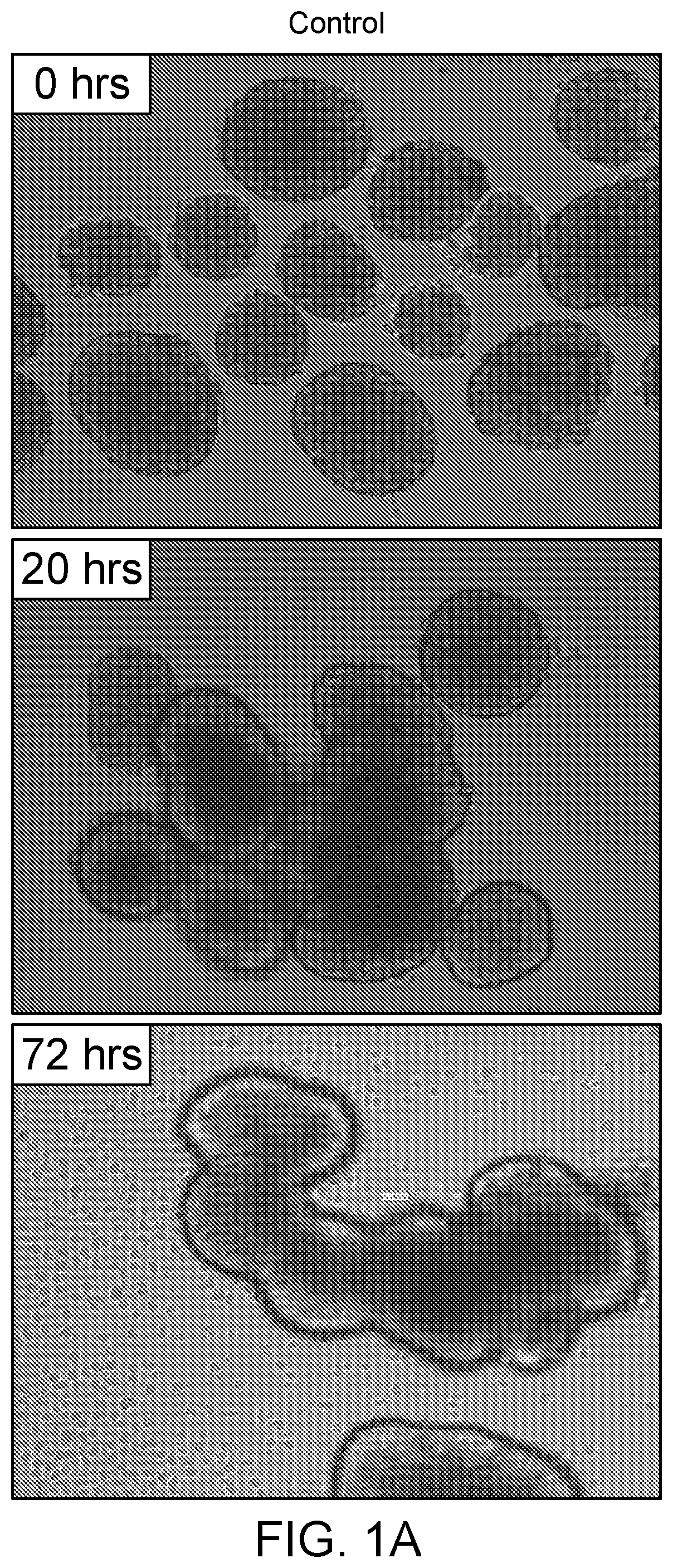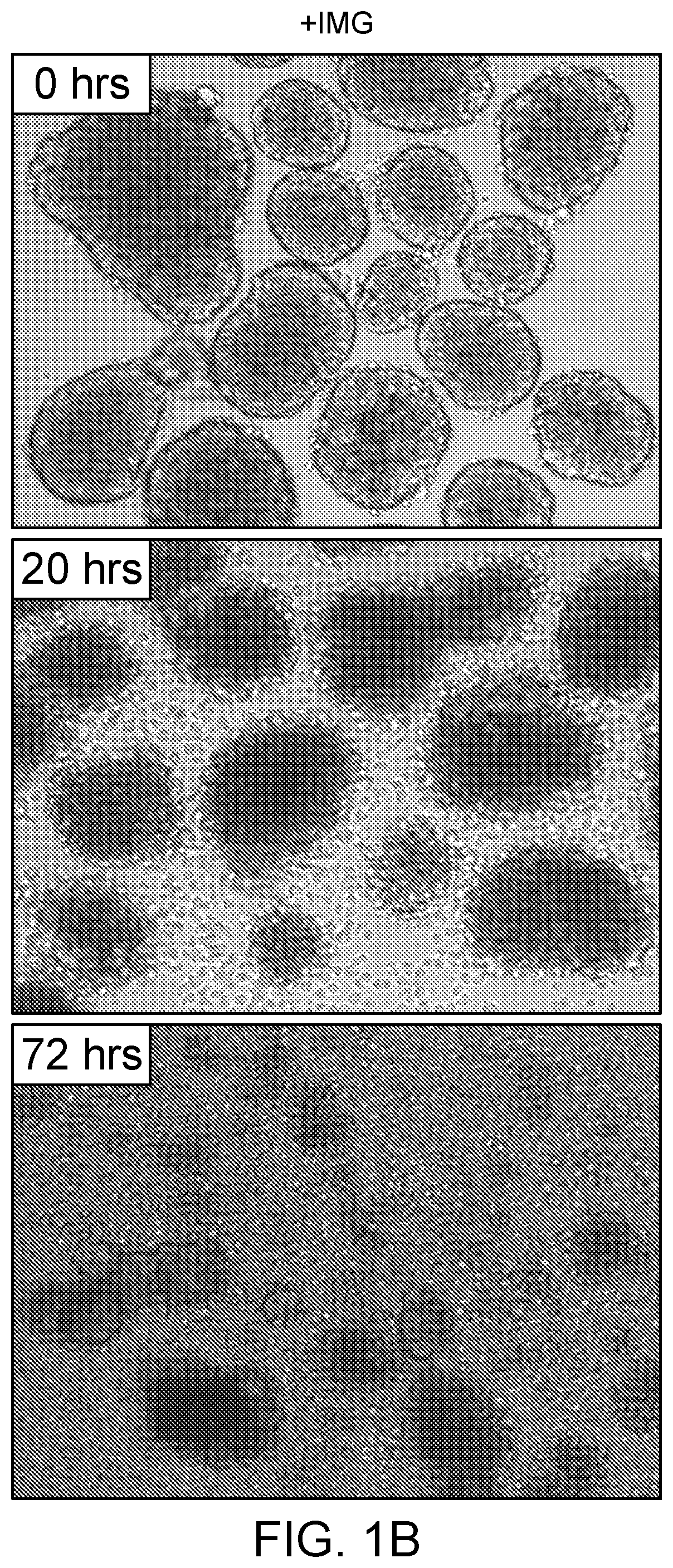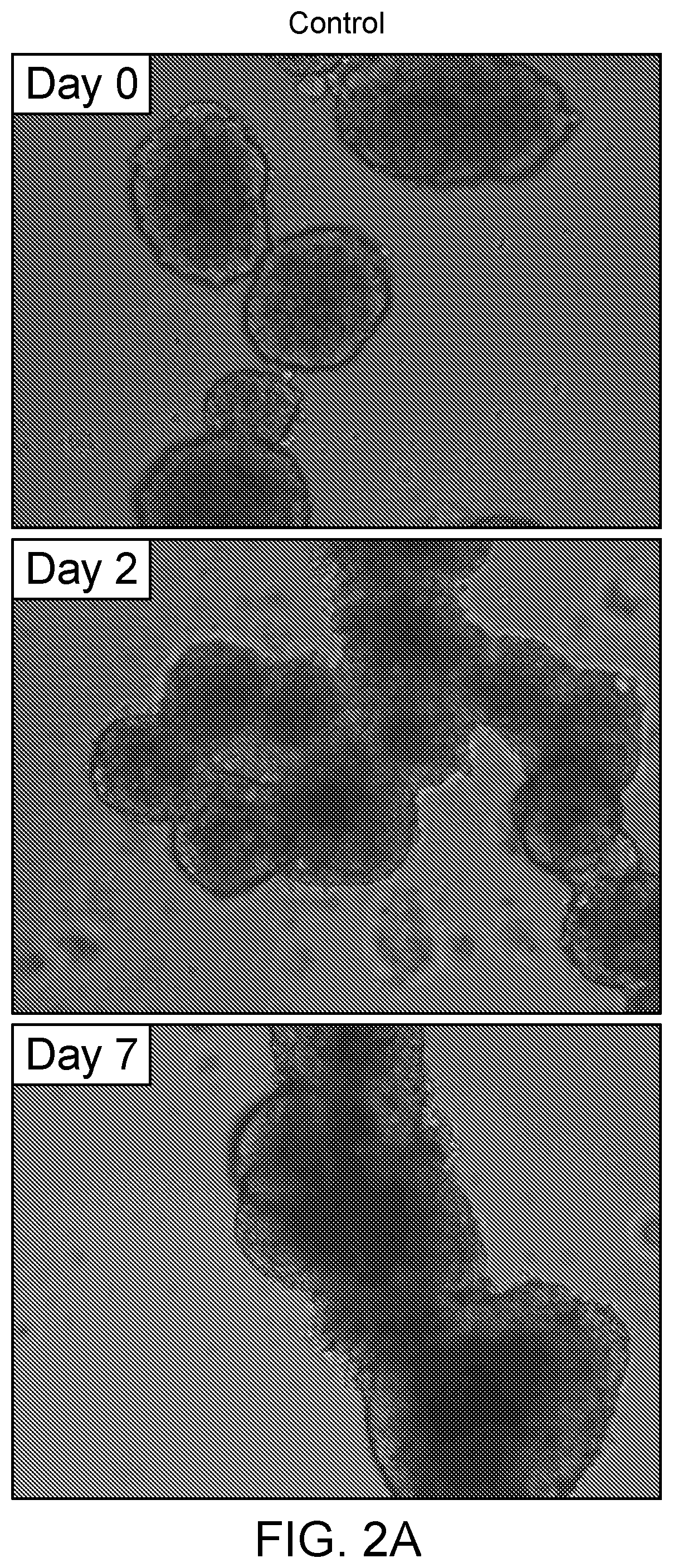Composition and Methods for Producing Insulin Producing Islet Cells
a technology of islet cells and compositions, applied in the field of composition and methods for producing insulin producing islet cells, can solve the problems of severe damage to many body systems, reduced study of diabetes and islet biology, and less insulin produced in quantity and effectiveness
- Summary
- Abstract
- Description
- Claims
- Application Information
AI Technical Summary
Benefits of technology
Problems solved by technology
Method used
Image
Examples
example 1
[0059]In one exemplary study, 300 murine islets were isolated from the pancreas of male BALB / c mice (such as available from Jackson Labs or Charles River) of eight to ten weeks of age. The isolated islets were cultured in a culture medium comprising CMRL medium (originally developed by Connaught Medical Research Laboratories and now available from Mediatech, amongst others) supplemented with 10% fetal calf serum, 2 mmol L-glutamine, antibiotics and an additive comprising IMG at a concentration of about 3.0 μg / mL. The treated cells were grown alongside and compared to control cells, which were identical cells that were grown in base medium that did not contain IMG. Within 24 hours it was observed that the cells grown in the cell culture media comprising IMG became less clustered and the cultured islet cells appeared to actively migrate away from cell clusters, based upon visual inspection by microscopy at 10 times magnification (using a Leica Light Microscope with a Lumenera camera w...
example 2
[0061]In another exemplary study, human islets were utilized. Human islets, such as Human Islets for Research (HIR)®, which are primary human islets processed from organ donor pancreases are commercially available from Prodo Laboratories, Incorporated. Generally, human islet populations are less than 3% positive for Ki-67, and healthy islets are approximately 50% insulin-producing in response to stimuli. In this Example, ten (10) islets were cultured in a culture medium comprising CMRL 1066 medium, 10% fetal calf serum, 10% human serum, 2 mmol / L-glutamine, antibiotics and IMG at a concentration of about 10.0 μg / mL. Islets cultured in culture media comprising IMG were compared with control cells, which were cultured in CMRL 1066 media (alone) without IMG. The treated and untreated human islets were cultured for 5 days at 37° C. and then underwent a CyQUANT Cell Proliferation Assay (such as available from Invitrogen). Within 5 days, human islets cultured in culture medium comprising I...
example 3
[0062]Separately, human islets (3,000-10,000) were cultured in control media or media comprising CMRL 1066 media supplemented with 10% fetal calf serum, 10% human serum, 2 mmol / L-glutamine, antibiotics, and IMG at a concentration of 10.0 μg / mL on plates coated with an attachment factor mixture (AFM) comprising Collagen Type I (Collagen from rat tail, Sigma-Aldrich C3867) and Endothelial Cell Attachment Factor (ECAF, Sigma-Aldrich E9765). Various ratios of ECAF and collagen may be used, including a 50 / 50 ratio of collagen to ECAF. A thin layer of AFM (between 3-10 mL) was applied and after setting for 30 minutes the excess AFM was removed, and the plates were allowed to dry for 45 minutes in the hood. Prior to use the plates were washed with PBS to remove any potential contaminants. Cultured islets were incubated in AFM-treated flasks (plates may be used) in either culture medium or control medium for 2 to 5 days.
[0063]Control islets (cultured in standard CMRL media not containing IM...
PUM
| Property | Measurement | Unit |
|---|---|---|
| concentration | aaaaa | aaaaa |
| concentration | aaaaa | aaaaa |
| concentration | aaaaa | aaaaa |
Abstract
Description
Claims
Application Information
 Login to View More
Login to View More - R&D
- Intellectual Property
- Life Sciences
- Materials
- Tech Scout
- Unparalleled Data Quality
- Higher Quality Content
- 60% Fewer Hallucinations
Browse by: Latest US Patents, China's latest patents, Technical Efficacy Thesaurus, Application Domain, Technology Topic, Popular Technical Reports.
© 2025 PatSnap. All rights reserved.Legal|Privacy policy|Modern Slavery Act Transparency Statement|Sitemap|About US| Contact US: help@patsnap.com



